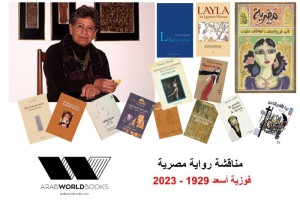Apricot Palace one of the typical traditional Siwan kershef houses that make up the lodge
Dr.Nematalla
Mud, salt and sand might not sound like the ingredients of anything luxurious, yet this is exactly what Dr. Nematalla used to build a one of a kind resort in Egypt.
Bordering the largest expanse of sand in the world near the oasis of Siwa lies Adrere Amellal (White Mountain in Siwan Berber) the brainchild of Dr. Mounir Nematalla, who chairs Environmental Quality International, a private firm that began investing in the oasis a few years ago proclaiming eco-sensitive sustained development for Siwa, whose unique identity is threatened by the spread of central Egypt. "Adrere Amellal caters to travelers who share a love of nature, a yearning for adventure and an appreciation of indigenous culture", he says.
The Lodge
The lodge, was built with 100 percent Siwan labour so that it would fit entirely into the architectural styles of the oasis. Built out of indigenous material using traditional Siwan building techniques and styles so as to have a minimal impact on the land Adrere Amellal sets an example for ecolodge development.
Situated at the base of a majestic white mountain and overlooking olive and palm groves as well as the Siwa lake, Adrere Amellal consists of a series of traditional Siwan kershef houses that have been restored and reconfigured into ten suites and 17 rooms, all of which offer genuine desert-style comfort. Furnishing is simple, but of the highest quality, drawing exclusively on local material and design to reflect Siwa's rugged spirit. Kershef, a mixture of sun dried salt rock mixed with straw, is used for wall building. Furniture and fixtures are made of palm trunks and fronds, while carpentry and accessories display the rich and colorful variety of the region's indigenous handicraft. Oil lamps and candles are used for lighting. On cold winter nights, coal-filled braziers are used for heating.
Organic Dining
Meals are quite an experience; fresh yogurt, thick date syrup, eggs, local bread, fruit and rich coffee make up breakfast which is served in natural rocky grottos at the base of the mountain, lunch in village style by the swimming pool, hidden within a palm and olive grove and fed by one of the 230 springs in the area, while dinner is by candle light and served in the maze of dining rooms, alcoves and bars, their mud walls studded with chards, or slices, of salt (from nearby salt lakes) that make dining under candlelight like eating in a galaxy.
What to see and do in Siwa
Guests can tour the village of Siwa, with its 13th-century-old enclave of Shali, and can drive or cycle through Siwa's dense palm groves to bathe in Cleopatra's bath and the Spring of the Sun.
Following into the steps of Alexander at Aghurmi
A visit to the mountain of the dead follows the steps of Alexander the Great at Aghurmi.
The main attraction of Siwa Oasis is Aghurmi or the Temple of the Oracle Ammun located 4 km from Siwa and dating back to the 26th Dynasty. The temple has a forecourt, a vestibule and a sanctuary.This is where Alexander the Great sought counsel from the god Amun before taking over rule of Egypt.
Plutarch recorded:"Having passed through the wilderness, they came to the place where the high priest, at the first salutation, bade Alexander welcome from his father Ammon. And being asked by him whether any of his father's murderers had escaped punishment, he charged him to speak with more respect, since his was not a mortal father. Then Alexander, changing his expression, desired to know of him if any of those who murdered Philip were yet unpunished, and further concerning dominion, whether the empire of the world was reserved for him? This, the god answered, he should obtain, and that Philip's death was fully revenged, which gave him so much satisfaction that he made splendid offerings to Jupiter, and gave the priests very rich presents. This is what most authors write concerning the oracles. But Alexander, in a letter to his mother, tells her there were some secret answers, which at his return he would communicate to her only. Others say that the priest, desirous as a piece of courtesy to address him in Greek, "O Paidion," by a slip in pronunciation ended with the s instead of the n, and said "O Paidios," which mistake Alexander was well enough pleased with, and it went for current that the oracle had called him so."
The hillsides with their honeycomb of tombs abound in the area. Some still hold mummies and many have their original funeral murals.
Four-wheel-drive treks into the Great Sand Sea take you along breathtaking scenery. Your guides brew traditional Arabic tea and you are treated to a meal of dates and sour goat milk as you take in the splendid view of the largest sand dune in the world.
Siwa Oasis enjoys numerous properties that place it at the top of the list of these sites recommended for therapeutic tourism. It is distinguished by a calm, clear environment and mild temperature. By boiling the deep subterranean pollution free mineral water a treatment is available for treating renal stones.
Gabal al Takrour is important for in treating Rheumatism and general weakness by burying the patient in hot sands surrounding the mountain.
Return to Adrere Amellal
And finally return to the Adrere Amellal ecolodge to sip a chilled glass of karkade or tamarind on your room's terrace overlooking one of Siwa's many salt lakes. Soon it will be dark. Candle light dinner, anyone?
sources:
Alexander in Egypt (diod -Plutarch)
The Desert Sun
Desert Traveller
USA Today
Ahram Weekly
Egy.com



